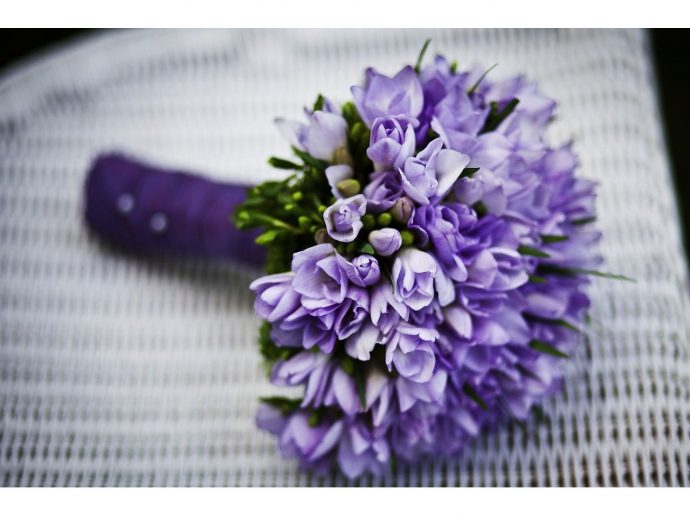Categories more
- Adventures (17)
- Arts / Collectables (15)
- Automotive (37)
- Aviation (11)
- Bath, Body, & Health (77)
- Children (6)
- Cigars / Spirits (32)
- Cuisine (16)
- Design/Architecture (22)
- Electronics (13)
- Entertainment (4)
- Event Planning (5)
- Fashion (46)
- Finance (9)
- Gifts / Misc (6)
- Home Decor (45)
- Jewelry (41)
- Pets (3)
- Philanthropy (1)
- Real Estate (16)
- Services (23)
- Sports / Golf (14)
- Vacation / Travel (60)
- Watches / Pens (15)
- Wines / Vines (24)
- Yachting / Boating (17)
How to Choose a Flower Bouquet for Different Occasions: Universal Guidelines
Published
09/22/2025Flowers are a universal language of emotions. They speak when words fall short, making them suitable for almost every occasion — from joyful celebrations to solemn farewells. However, choosing the right bouquet can sometimes feel overwhelming. Each flower type and color carries a symbolic meaning, and cultural traditions often influence what is considered appropriate.
Understanding the fundamentals of bouquet selection allows you to give a meaningful gift that reflects the right sentiment. It’s not just about aesthetics but also about thoughtfulness, timing, and the message you want to convey. For example, people often turn to flower delivery in London when looking for arrangements tailored to both modern trends and traditional etiquette. This shows how context and location influence floral choices, but the underlying principles remain universal.
Why Bouquet Selection Matters
Symbolism in Flowers
Flowers have carried symbolic meanings for centuries. Red roses represent love and passion, lilies symbolize purity, while sunflowers convey warmth and admiration. Choosing a bouquet without considering these meanings may unintentionally send the wrong message.
Emotional Impact
A well-chosen bouquet enhances the emotional impact of your gesture. Whether it’s joy, sympathy, gratitude, or romance, flowers amplify the message you wish to express.
Cultural Considerations
In some cultures, specific flowers or numbers of stems are associated with certain beliefs. For example, in parts of Europe, even numbers of flowers may be reserved for funerals. Being mindful of such traditions shows respect and awareness.
Guidelines for Different Occasions
Birthdays
Bright, cheerful flowers like gerberas, tulips, or mixed seasonal bouquets are suitable for birthdays. They reflect energy and positivity, making them perfect for celebrating life and milestones.
Anniversaries
Romantic flowers such as roses, orchids, or calla lilies are traditional choices. For milestone anniversaries, some people select flowers that correspond to the number of years together, such as daisies for the fifth or daffodils for the tenth.
Weddings
Bouquets for weddings often reflect the couple’s chosen color palette. White, pastel, or blush tones dominate, symbolizing purity and new beginnings. Guests may also give elegant arrangements that harmonize with the event’s theme.
Sympathy and Funerals
In moments of grief, understated arrangements such as lilies, chrysanthemums, or carnations are common. White is the most traditional color, symbolizing peace and remembrance, though soft pastels are also appropriate.
Thank You Gifts
A simple yet elegant arrangement of mixed seasonal flowers or sunflowers expresses gratitude. Small to medium-sized bouquets are often preferred, as they convey warmth without overwhelming the recipient.
Professional Occasions
For corporate settings, bouquets should be sophisticated and not overly romantic. Neutral colors, orchids, or white roses can convey respect and appreciation without misinterpretation.
Choosing by Color
Red
Represents passion, love, and strength. Most often reserved for romantic occasions.
White
Symbolizes purity, sincerity, and remembrance. Appropriate for weddings, sympathy, and formal settings.
Yellow
Represents friendship, happiness, and optimism. Popular for birthdays and celebrations.
Pink
It is associated with admiration, gratitude, and gentleness. Suitable for anniversaries, thank-you gifts, and welcoming new life.
Mixed Colors
A mixed bouquet can express multiple emotions at once, making it versatile for casual occasions and joyful celebrations.
Practical Tips for Selecting Bouquets
Think About the Recipient
Consider the recipient’s personality, preferences, and lifestyle. Someone who enjoys bright, bold colors may appreciate an exotic arrangement, while others may prefer simple, classic choices.
Match the Bouquet to the Season
Seasonal flowers are often fresher, more affordable, and carry a natural charm. For example, tulips in spring or dahlias in autumn reflect the beauty of the season.
Consider Longevity
Some flowers last longer than others. Carnations, alstroemerias, and orchids are known for their durability, making them good options when you want the bouquet to be enjoyed for days.
Presentation Matters
Bouquets can be hand-tied, arranged in boxes, or presented in vases. Choosing the right format adds to the convenience and overall impression of the gift.
Caring for the Bouquet After Giving
Recipients often want their flowers to last as long as possible. You can add value to your gift by sharing simple care tips:
- Trim stems at an angle before placing them in water.
- Replace the water every two days.
- Keep the bouquet away from direct sunlight and heat sources.
- Remove wilted flowers promptly to extend freshness.
FAQ
What flowers are most versatile for different occasions?
Roses, lilies, and tulips are considered versatile because their meaning can be adapted to multiple contexts. Their colors and arrangements determine whether they suit romantic, formal, or casual events.
How can I ensure I'm not sending the wrong message with flowers?
Pay attention to flower meanings, colors, and cultural traditions. When in doubt, a mixed seasonal bouquet in neutral or cheerful tones is a safe choice that conveys positive emotions.
Are seasonal flowers a better option for bouquets?
Yes, seasonal flowers are often fresher, more affordable, and environmentally friendly. They also reflect the natural beauty of the time of year, adding authenticity to your gift.















